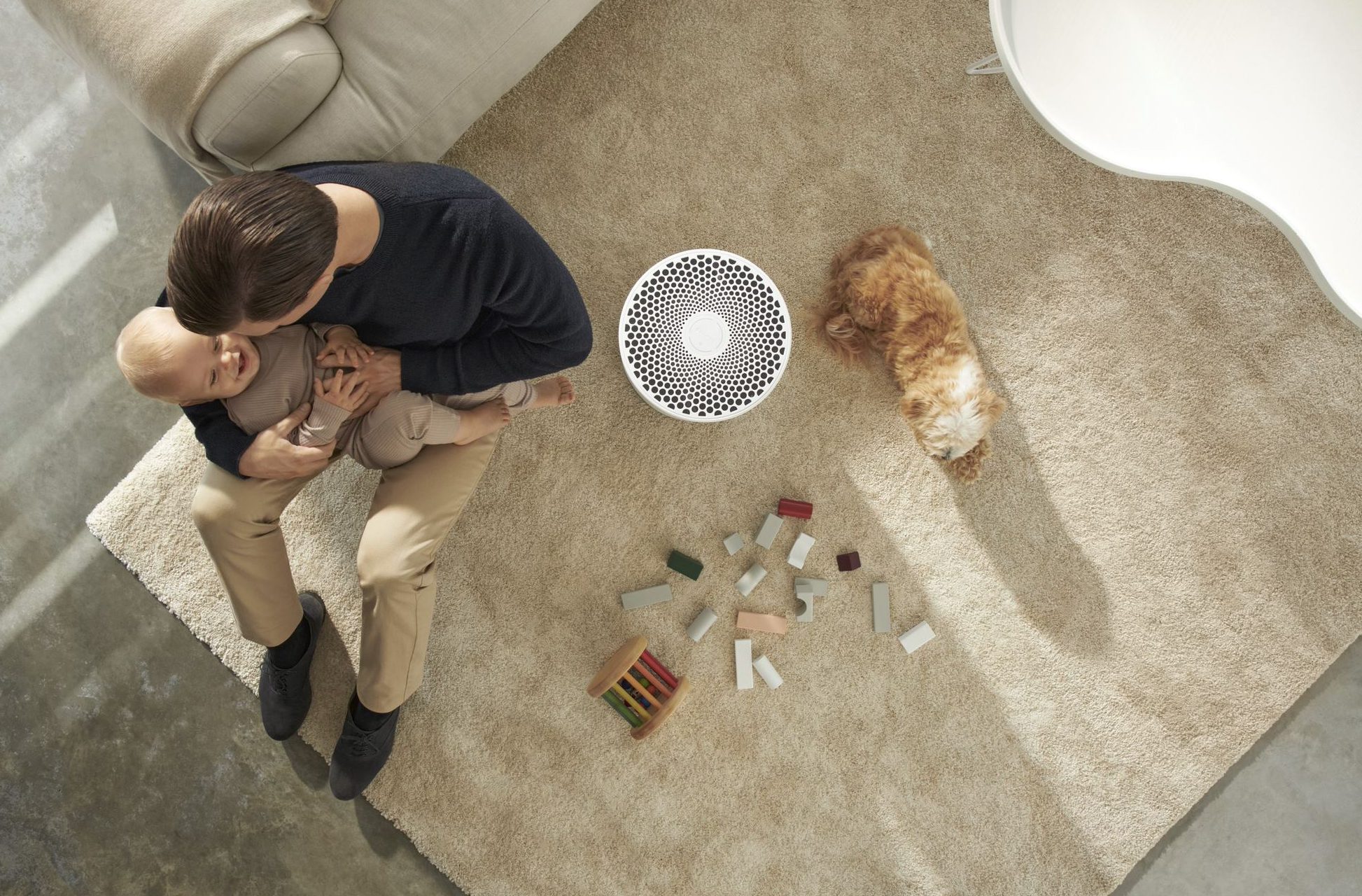
Air purification expert Blueair writes
Feeling sniffly and getting dry eyes recently? You may be experiencing hay fever symptoms. While many of us associate hay fever with summer, pollen season can actually start much earlier than that. And this year, February was one of the mildest and driest on record according to the Met Office, meaning pollen season has already begun in many parts of the UK.
The culprits affecting early sufferers are tree pollen coming from species such as hazel, poplar and alder. These will be followed by cypress, oak and birch as it gets warmer.
It’s easy to track these tiny irritants indoors on your clothes or on your skin, where they’ll continue to trigger symptoms. Fortunately, an air purifier like those made by Blueair can help.
These gadgets are suitable for the home, or the office and they help improve indoor air quality by filtering the air to remove a wide range of allergens including pollen, pet dander, and mould.
Pollutants such as those released by new furniture or fresh paint, as well as cooking odours, are also eliminated in the process. Blueair’s HealthProtect™ and DustMagnet™ series as well as the Blue 3610 have even been tested to remove viruses such as SARS-CoV-2.1
But with so many air purifiers on the market now, it can be hard to decide which one is best. With this in mind, Lars Dunberger, Technology Development Manager at Blueair shares below some of the most important things to look for when buying an air purifier.
Check the CADR rate
The clean air delivery rate (CADR) is one of the most important numbers to look for when you’re picking out an air purifier as it shows you how effective the device is. The higher the CADR, the faster the machine cleans the air.
The figure is based on independent tests performed by the Association of Home Appliance Manufacturers (AHAM), which in turn recommends a suitable room size for an air purifier based on its CADR score.
The room sizes recommended for Blueair’s air purifiers are based on the strictest standards from AHAM – they’re capable of completely filtering the air 4.8 times in an hour.
Look for energy efficiency
Your air purifier will be on for long periods of time, and perhaps even 24/7, so it’s important that it’s energy efficient, especially in the current climate.
All of Blueair’s devices are designed with this in mind, so even on the high fan setting they use less energy than a light bulb.
Consider noise levels
If you’re planning to have your air purifier in your bedroom or have it on in the background while you work, checking the noise level is crucial. The number to look out for here is the dB(A) score, and the lower this is the better.
For any devices designed to be used in the bedroom, it’s also worth looking for the Quiet Mark certification, which are only awarded to the quietest devices on the market.
Blueair’s devices use HEPASilent™ technology, which charges particles in the air before they pass through the ultra-fine filters. This process is more effective than traditional filters, which is what helps Blueair’s air purifiers stay energy efficient and whisper quiet.
Find the right size
Air purifiers come in a range of different sizes and depending on your needs, one model might be more suitable than another. For a bedroom or study for example, a smaller device will suffice and it will save you space. But for bigger offices or open plan homes, you might need a bigger machine that has the CADR capabilities to suit your indoor space. This is one of the reasons why Blueair makes multiple sizes of its air purifiers.
Get one that’s made to last
Air purifiers can be a big investment so make sure the one you choose is designed to last. Blueair is the UK’s most awarded air purifier brand2, and its design-conscious devices are designed to beautifully fit with your interior décor while being easy to use and very energy efficient.
Notes
[1] HealthProtect™ 7440i, 7470i & DustMagnet™ 5440i tested in a 36m³ chamber by an independent third-party laboratory. Blue 3610 was tested in a 0,37m³ chamber by an independent third-party laboratory. Not proven to kill SARS-CoV-2 or reduce or prevent COVID-19 transmission. Not all Blueair air purifiers have been tested against SARS-CoV-2 and Blueair does not claim to kill/prevent transmission of COVID-19.
[2] This claim is based on number of awards won on performance testing conducted by 16 independent consumer associations, certifications, technical testing facilities, and media houses during 2019-2021 in the UK.






